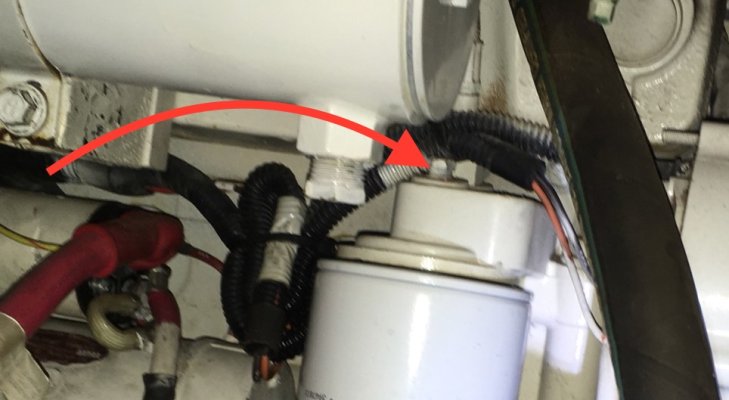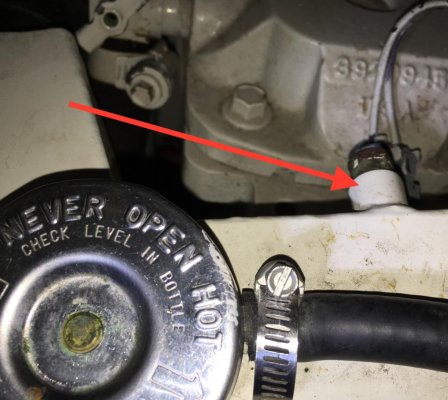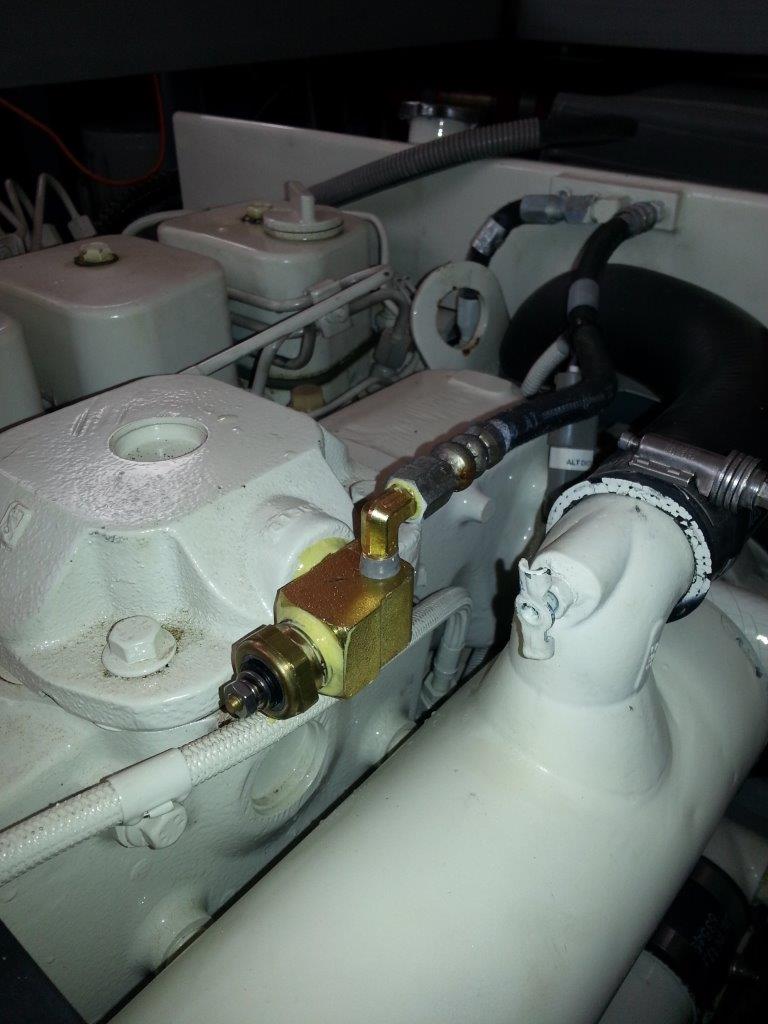So I want to add additional temperature and oil pressure sensors to my 1996 4BT 150hp engines on my boat. These will be in addition to the factory sensors which work; these additional sensors will be normally open sensors that I´ll wire to some Aqualarm panels/audible alarms. The main purpose of these additional alarms is to set off a loud audible alarm if the engine coolant temperature exceeds 200 degrees, or if the engine oil pressure gets too low.
About the low oil pressure sensor location -- pic below shows a good location I think, credit properly belongs to Tony Athens, who posted a nice pic of that location (just above the oil filter) on the Seaboard Marine website for the Cummins B series engines. Thank you Tony!
About the yet to be installed normally open 200 degree coolant temperature sensor location -- some questions here. Does the straight red arrow in my pic below show a good location in the coolant tank? Looks like an existing male threaded plug can be taken out, and a threaded coolant temperature sensor (maybe 3/8 npt?) inserted? And if so, where can I buy such a 3/8NPT male threaded 200 degree normally open sensor?
As an alternative, I know I can put a flat rectangular 200 degree normally open metal sensor under a bolt on the head or somewhere else on the engine. Most locations near the top pretty much the same if I have to go that way?
Looked for an existing thread on this topic. If I missed a good one that answers my questions, please point me to that thread. Thanks in advance!
About the low oil pressure sensor location -- pic below shows a good location I think, credit properly belongs to Tony Athens, who posted a nice pic of that location (just above the oil filter) on the Seaboard Marine website for the Cummins B series engines. Thank you Tony!
About the yet to be installed normally open 200 degree coolant temperature sensor location -- some questions here. Does the straight red arrow in my pic below show a good location in the coolant tank? Looks like an existing male threaded plug can be taken out, and a threaded coolant temperature sensor (maybe 3/8 npt?) inserted? And if so, where can I buy such a 3/8NPT male threaded 200 degree normally open sensor?
As an alternative, I know I can put a flat rectangular 200 degree normally open metal sensor under a bolt on the head or somewhere else on the engine. Most locations near the top pretty much the same if I have to go that way?
Looked for an existing thread on this topic. If I missed a good one that answers my questions, please point me to that thread. Thanks in advance!



